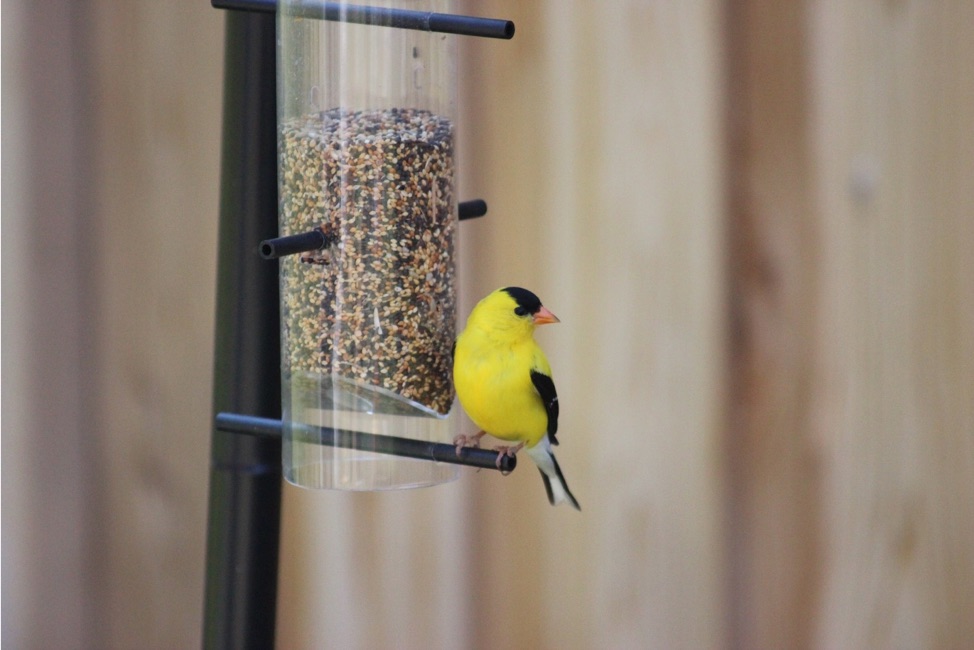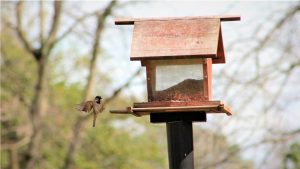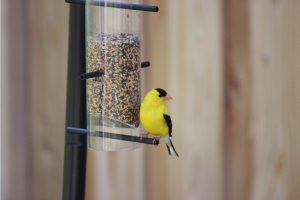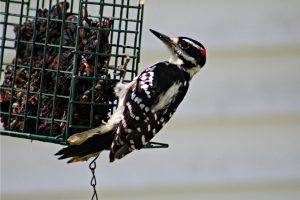In 2018, the Michigan Department of Natural Resources banned the baiting and feeding of deer in numerous counties
to help slow the spread of Chronic Wasting Disease. On January 31, 2019, the MDNR expanded the ban to include the entire Lower Peninsula.
As many bird enthusiasts know, it’s not always just our feathered friends flocking to bird feeders causing some feeding stations to come under heat with this ban.
Under the baiting ban, you should not put out any “substance composed of grains, minerals, salt, fruit, vegetables, hay or any other food material, whether natural or manufactured, which may lure, entice or attract deer.” At first glance, it may sound like you can’t put out any of the bird food, however, you can as long as you are doing your due diligence to keep the deer away.
The following tips will help you enjoy feeding birds legally while protecting Michigan’s deer:
- Use feeders that make it difficult or impossible for deer to access the feed. Tube feeders, hopper-style feeders, and cage-style suet feeders all provide minimal access to deer, but still allow cardinals, woodpeckers, chickadees, and goldfinches to visit. Platform and fly-through feeders provide easy access to deer and other large animals and are not recommended.
- Use feeds that are less attractive to deer, but still enjoyed by your favorite backyard birds! Thistle seed, suet, and hummingbird nectar are much less likely to attract deer than whole or cracked corn, black oil sunflower seeds, and other seeds usually found in commonly-available bird seed mixes.
- Only put out the amount of feed birds will eat in one day. Empty feeders are less attractive to deer.
- Place feed and feeders in locations that are less accessible to deer. Deer can reach feeders up to about 5 feet off the ground or a packed snow surface. Place feeders at least 6 feet off the ground or snow surface to prevent deer from accessing feed.
- Placing feeders directly next to windows is safer for birds; they are less likely to hit windows if feeders are within 3 feet of them. Placing feeders close to your home may also deter some deer from feeding at them.
- Securely install 4-foot or taller woven wire fencing around all your feeders to prevent deer from reaching over or through to feed or fence your yard with a woven wire fencing that is at least 10 feet tall to prevent deer entering. Fence height requirements will vary depending on the depth of the snow in your area.
- Keep the area around your feeders clean. Scattered seed on the ground under bird feeders can attract deer and other mammals. Place a platform, at least 5 feet off the ground, under the hanging feeder to catch all spilled feed. Clean this platform daily (if not more often, depending upon the spilled seed).
- Mess-free bird seed options are also available to purchase at stores, which will help reduce the amount of seed and seed shells beneath your feeders.
Following these guidelines will help reduce the chances that your bird feeding will attract deer, therefore helping to lower your chances of violating the baiting and feeding ban. If deer are still attracted to your feeder after following these guidelines, you may need to remove your feeder or take further action to deter deer from your feeding station.
Remember that by making a few small changes you are helping to make Michigan a safer place for all of its wildlife!
You can find more information on the baiting and feeding ban at www.michigan.gov/dnr.
Bird feeding tips were put together by Michigan Audubon and MDNR.




